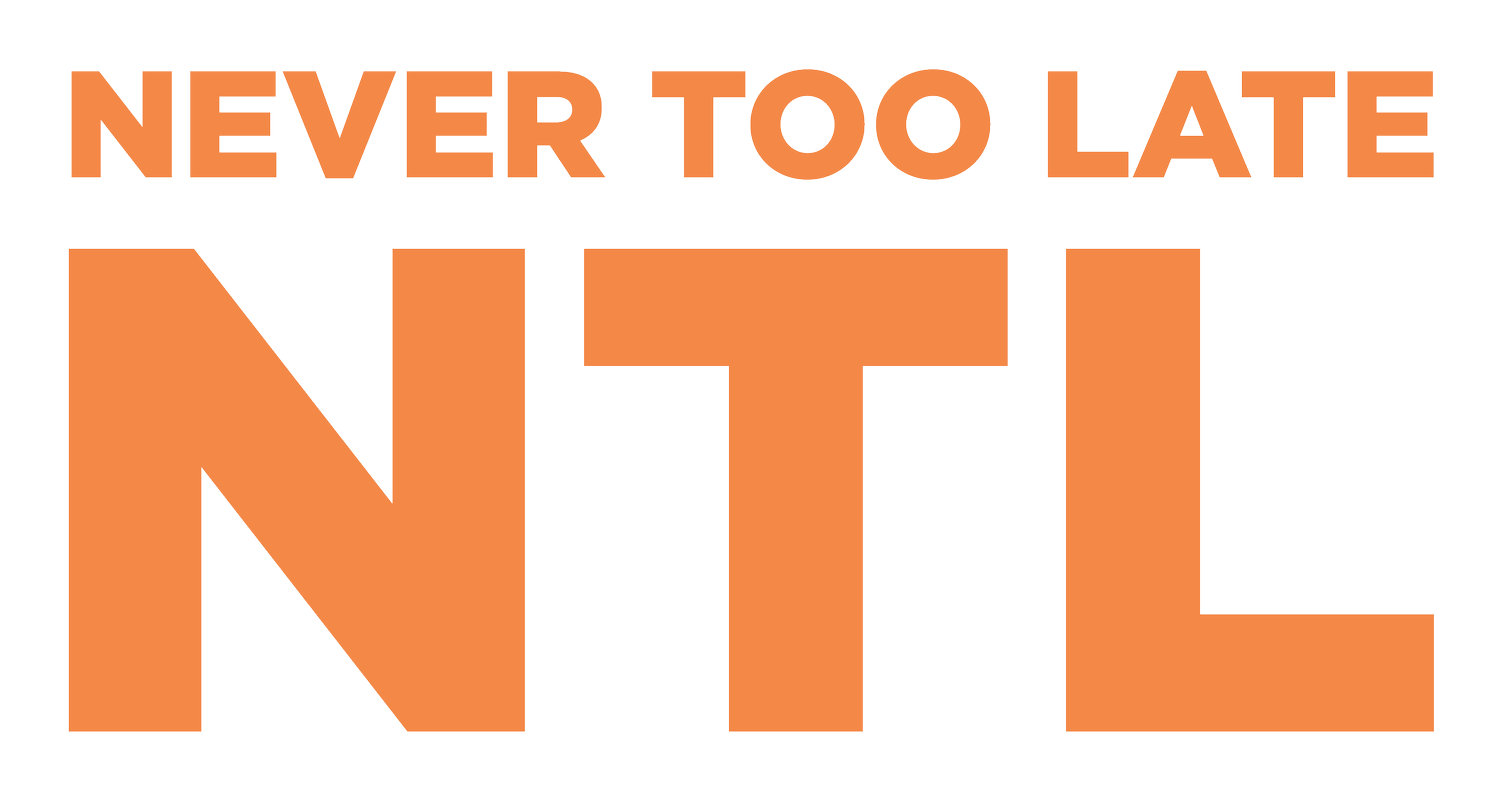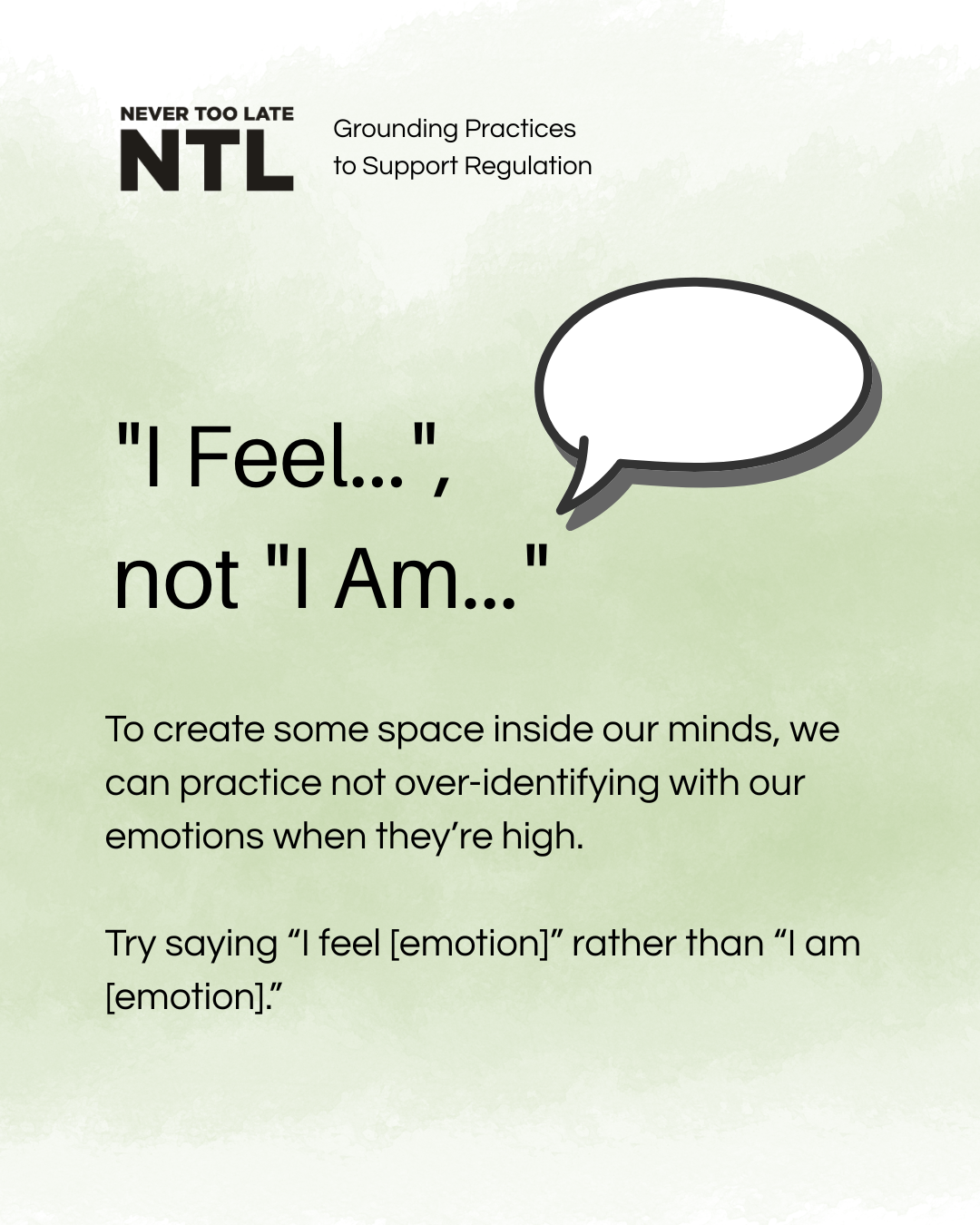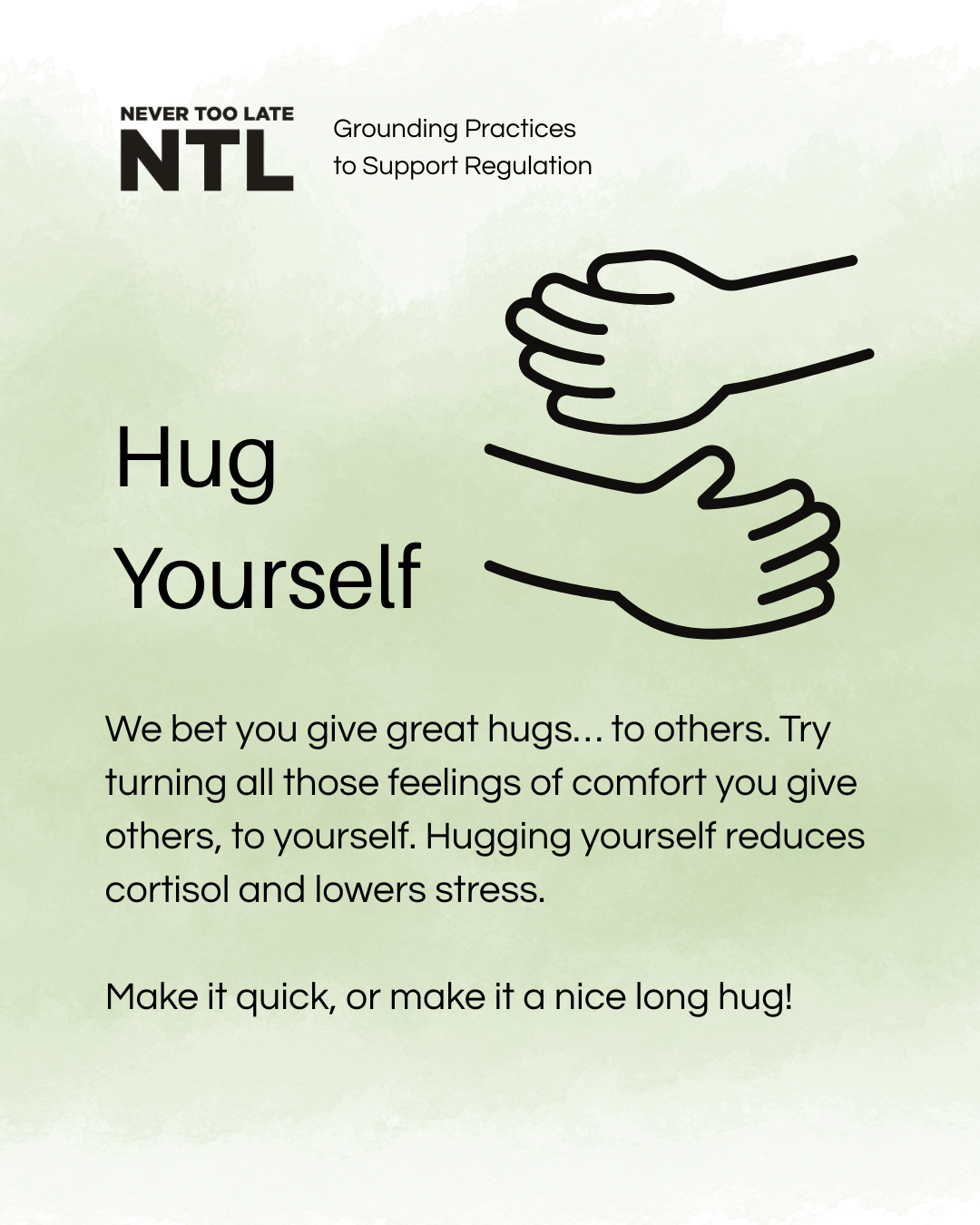Grounding Practices to Support Regulation
Below are some grounding practices that will be used throughout Training for Humans. This training can stir up many challenging feelings and experiences for participants. To help maintain regulation and support the brain in processing the information provided, we will facilitate the following practices throughout the session and encourage you to use them when you see fit. This also helps us begin to practice regulating grounding techniques, which may be helpful during frustrating moments in our permanency and relational journeys.
The techniques offered below were identified and written by Cherie Werhun, a Human in our community. It is not a definitive or prescriptive list. We trust our community to explore the resources we share in a way that makes sense for your own experiences and select the strategies that work best for you.
-
To create some space inside our minds, we can practice not over-identifying with our emotions when they’re high.
Pay attention to the feelings in your body right now. Identify what’s there.
Play with your internal language. Instead of saying “I’m sad” try saying “I’m feeling sad” (for example). Repeat slowly as needed.
Try saying, “I’m not my emotions… I am the one experiencing my emotions”.
Check in to see how you’re feeling now.
Has this shift in identification with your emotion created some space inside?
-
Emotions can last around 90 seconds if we can let rise and fall. Try riding the wave of emotion with some self-compassion.
Notice the feeling you are experiencing right now.
Try to allow the feeling to just be. To rise without reacting to it. No judgment. Just let it rise.
Watch it fall or start to decrease in intensity as you continue to not attach to it.
When it feels less intense or present in your body, take a breath, and continue on.
Congratulate yourself.
-
Self-compassionate curiosity can ground us when we feel all hot inside. Let rain help cool your insides, allowing you to respond in ways that reflect how you desire to be.
R: Recognize what’s happening inside of you.
A: Allow whatever is there to be, just as it is. No judgment. No interrogation.
I: Investigate the sensations, the feelings with curiosity and some kindness. “Oh, I see… I’m starting to feel some jealousy…”
N: Nurture that part of you that is hurt or suffering in the moment. Consider saying “I understand…” or “Tell me more…” or “What do you need?” to the part. If you’re able, try to respond to what it needs. Can you give it a reassuring message or reply?
-
Rather than getting into an argument with that inner critical voice that pops up, try acknowledging it, even saying thank you for trying to protect you, and asking it to step aside for some time.
You’re experiencing negative self-talk at the moment. (e.g., How could I be so stupid? I suck at everything! Or “This is too big for you. You’ll never succeed!”)
Pause to notice what feelings are there with the thoughts. Check in with your body for any sensations.
Try to welcome these thoughts and feelings with some gentle kindness and even some gratitude. “Can you tell me more?” Or, “Oh hi anxiety, I know you’re trying to help me, thank-you!”
Acknowledge what’s there and ask it to sit in the back seat for a while. Tell it that you’re not pushing it away. You’re just going to let courage or confidence or… take the driver’s seat for a bit.
Check in. How does your mind and body feel? Go slow. Be gentle.
-
We bet you give great hugs… to others. Try turning all those feelings of comfort you give others, to yourself. Hugging yourself reduces cortisol and lowers stress.
Extend your arms in front of you with palms facing away from each other.
Cross your wrists over each other and interlace your fingers.
Pull your interlaced hands down and towards your stomach.
Twist your hands up to place in between your left shoulder and ear.
Rest the side of your head against your hands and breathe for 2 minutes.
Now repeat on the other side.
-
If you’re feeling overwhelmed humming can help to ground you and reset your nervous system. It slows down your heart rate and eases your body’s flight/flight response. And who knows, you might hum a favourite tune!
Sit comfortably in a quiet place and close your eyes or look down if that feels comfortable.
Slowly inhale through your nose and exhale through your mouth. Repeat.
Feel your body relax as you breathe. Continue.
Close your lips and make a low-pitched hummmmm… sound as you exhale.
Exhale comfortably, noticing the humming vibration in your throat.
Do this for 5 breaths and then return to your normal breathing.
Notice how your body feels.






